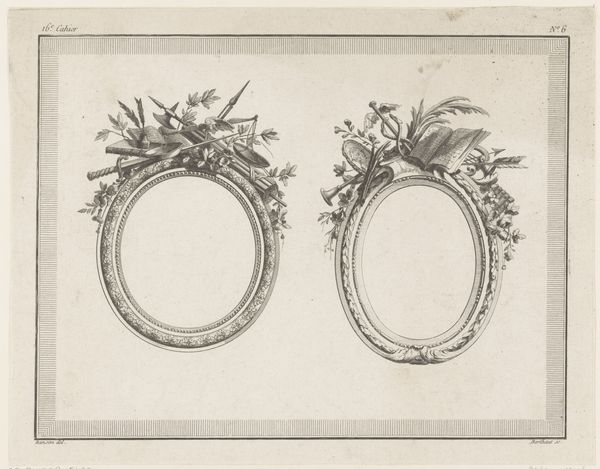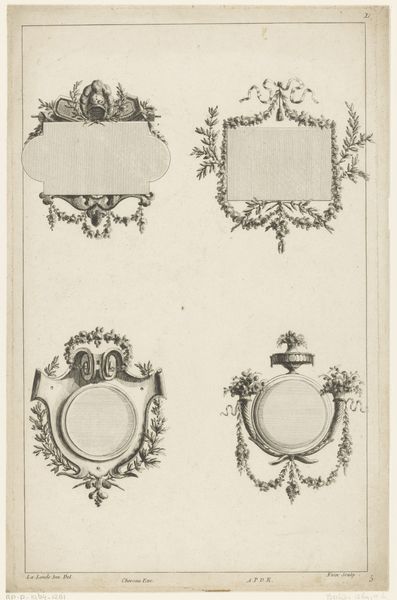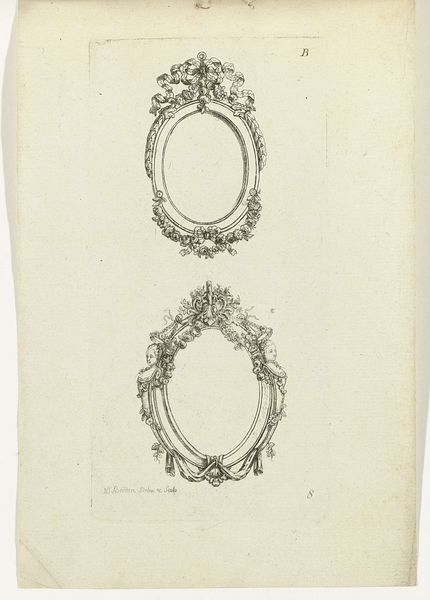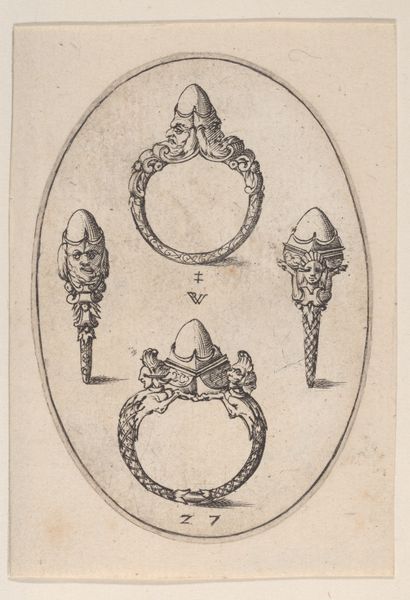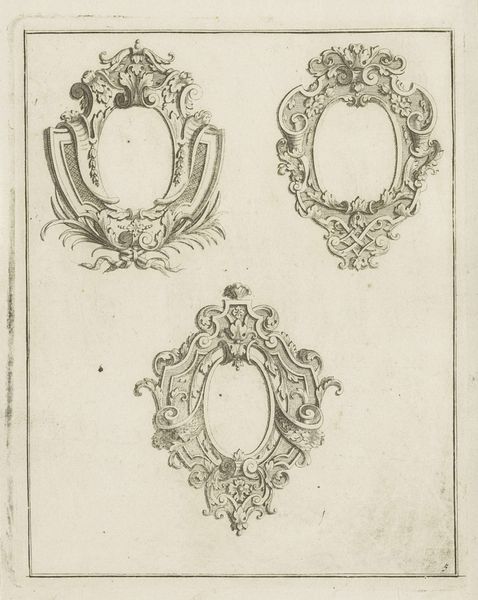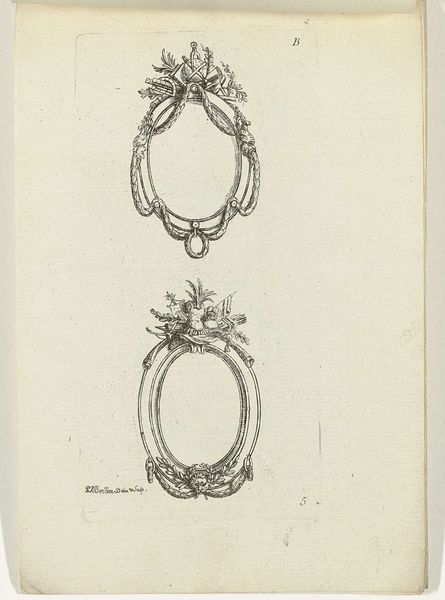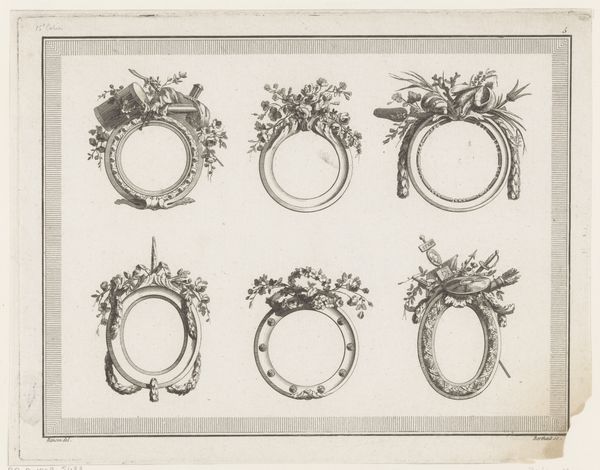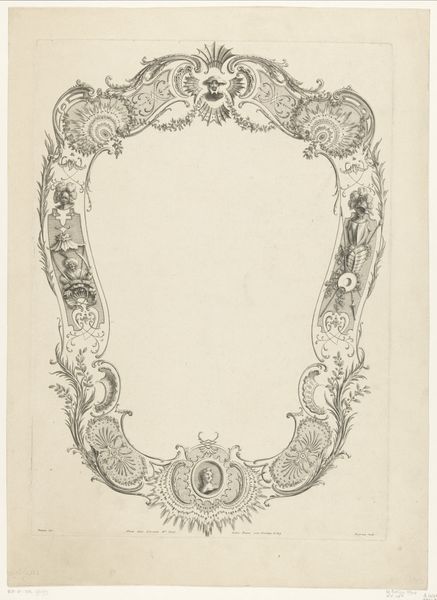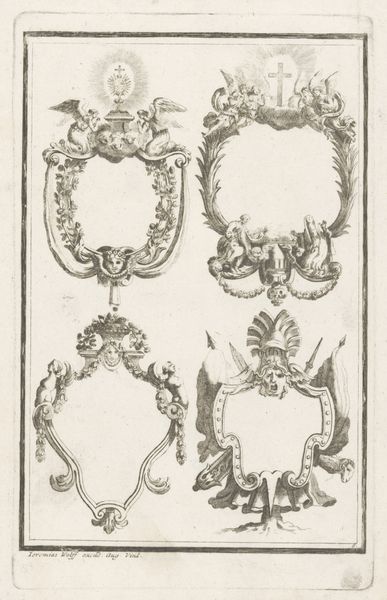
drawing, print, engraving
#
drawing
#
neoclacissism
# print
#
old engraving style
#
form
#
geometric
#
line
#
decorative-art
#
engraving
Dimensions: height 340 mm, width 215 mm
Copyright: Rijks Museum: Open Domain
Editor: This engraving from 1784-1785, "Cartouches en medaillon" by Augustin Foin, features a series of decorative cartouches. The precision of the lines gives it an almost architectural feel. What's most striking to you about this piece? Curator: What grabs my attention is the context of its creation, the late 18th century. Neoclassicism, as reflected here, wasn't just an aesthetic choice, it was a political statement. The aristocracy sought to legitimize their power through association with the grandeur and perceived stability of the Roman Empire. Notice how these cartouches, which are essentially frames, seem designed to hold something of importance – a portrait, perhaps, or a family crest. Where would such items appear, and to what purpose? Editor: I see what you mean. They are not simply ornamental; they’re meant to display status. So these designs would be reproduced perhaps in grand houses, or official buildings? Curator: Exactly! Think about the institutions, the social structures that this type of imagery upheld. This engraving circulated as a design template, informing a visual culture of power and hierarchy. These designs ended up woven into the fabric of buildings and objects, perpetuating an elitist worldview. What I wonder is, how conscious was Foin of that political element? Was he just applying a fashionable style? Editor: That's a great question! I hadn’t really considered that. It’s fascinating how even something that seems purely decorative can carry so much historical and political weight. I'll definitely look at Neoclassical art differently now. Curator: It's crucial to understand art as not existing within a vacuum, but in a constant dialogue with society. Hopefully, this lens will give us a greater understanding of these objects.
Comments
No comments
Be the first to comment and join the conversation on the ultimate creative platform.

